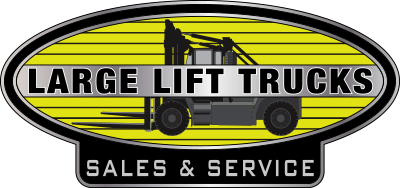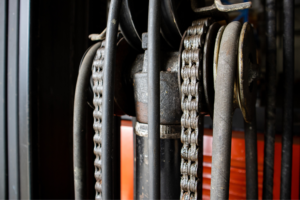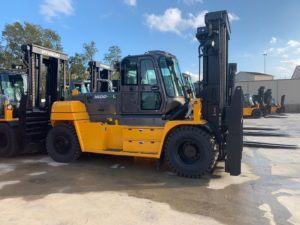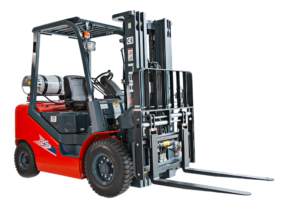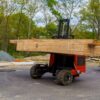What Is a Scissor Lift?
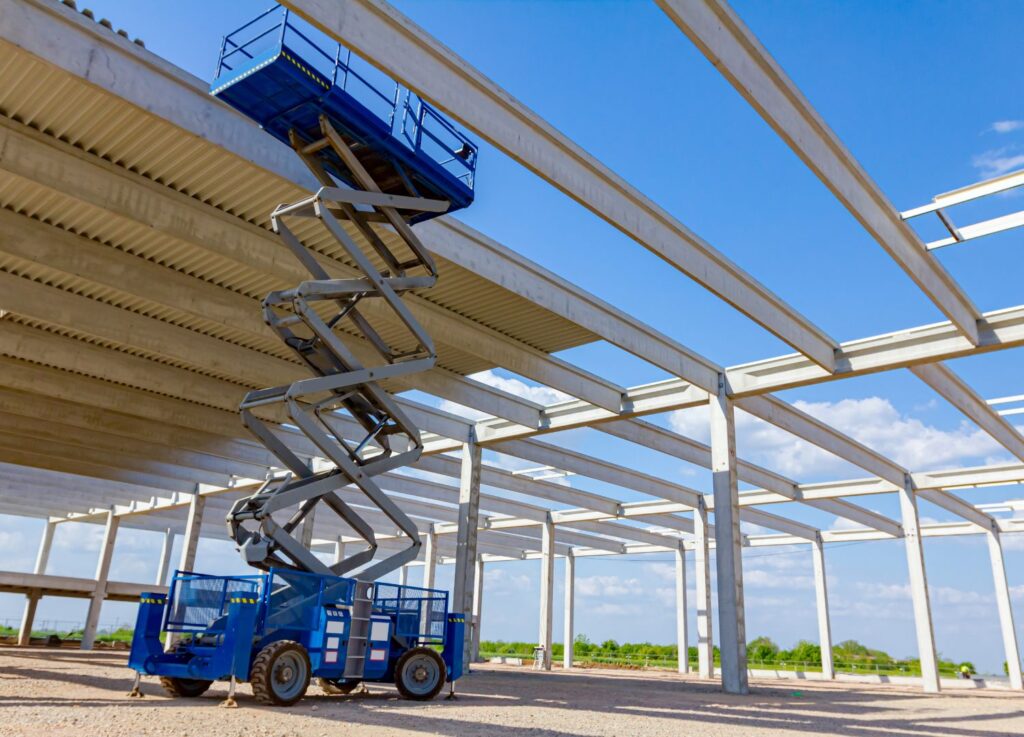
Certain industrial and commercial tasks are to be performed at a height. To fulfill these tasks, industrial and commercial workers need a machine that can help them reach elevated heights and work safely. This is where scissor lifts are of utmost importance. Scissor lifts help with several tasks that include workspaces, such as ceiling work, sign hanging, maintenance tasks, or light fixture installation. These are also very useful for certain outdoor projects, including tree trimming, bricklaying, or working on power lines.
What is a Scissor Lift?
A scissor lift is a portable machine or scaffold used to raise materials and people. The platform moves up and down through the criss-crossed beams of scissor lift equipment that function in a scissor-like manner, hence the name. OSHA classifies these scissor lifts as portable work platforms instead of aerial lifts, as the lifting mechanism of the scissor lift moves only vertically.
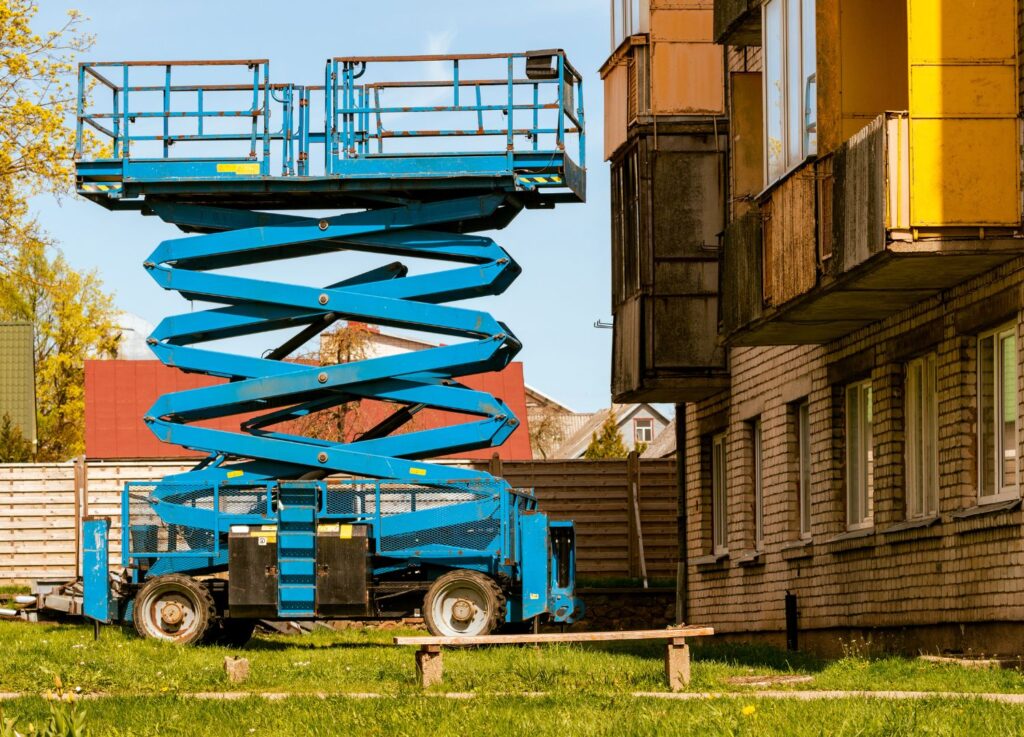
Types of Scissor Lifts
Both rough-terrain and electric scissor lifts are used to lift several materials and workers to heights. However, they differ in the following ways:
Rough-terrain scissor lifts: These lifts are a great option for construction applications and outdoor industrial applications. If your project includes off-road navigation or uneven surfaces, this four-wheel-drive model fits your purpose best.
Electric scissor lift: These machines are highly maneuverable and produce zero emissions. In addition, they are excellent for indoor environments with even surfaces. Hence, they are perfect for tasks like fixture installation, window cleaning, and building repairs.
Uses of a Scissor Lift
Several work environments use elevated work platforms, from indoor warehouses to construction sites to film studios. Some of the major applications of a scissor lift include the following:
Warehousing
Warehouses use scissor lifts for multiple functions. These lifts provide a safer way to streamline the procedures of inventory, such as unloading and loading pallets and retrieving and lifting heavy goods from shelves. Furthermore, it is also used for other basic tasks in the warehouse, such as hanging signs and changing light fixtures.
Maintenance Repairs
Scissor lifts are used for various maintenance and repair tasks that need an elevated-height platform. Industrial workers use these lifts to monitor large machinery and maintenance. Workers use these lifts to repair any damage to the ceiling, and HVAC technicians utilize this lift to inspect AC units or pipes.
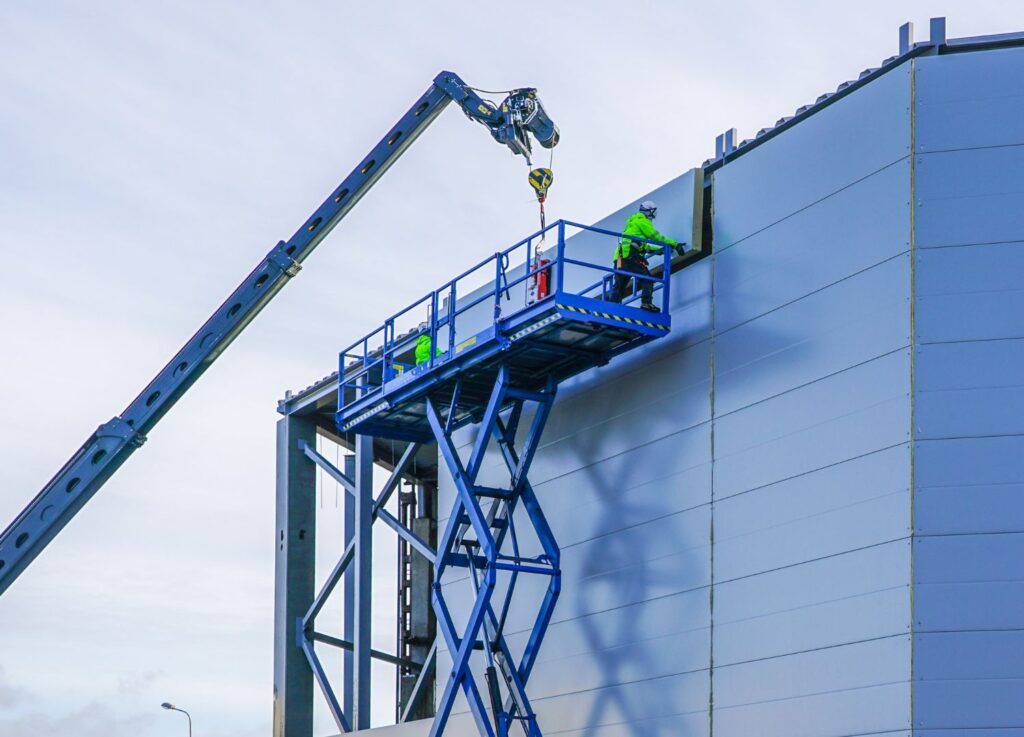
Recording and Filming Events
Each creative production uses a scissor lift for numerous tasks. For instance, artists use these lifts whenever they require support for their big projects, like tall sculptures or high murals. Moreover, in the film or media industry, scissor lifts help videographers and photographers capture various events from different angles and heights.
Ceiling Work
Factories, schools, hotels, and many other buildings with high ceilings use these lifts for tasks requiring access to high areas. Basically, workers use elevated platforms to replace or install cables, overhead lighting, and HVAC pipes. They might also use scissor lifts for constructing, painting, or maintaining damage on high walls or ceilings.
Hanging Signs
Workers use scissor lifts to hang outdoor and indoor signage. Construction work sites also use these lifts to put up certain warning notices for pedestrians.
Maintaining Power Lines
A scissor lift comes with enough safety and stability. Electric workers use them to maintain and fix power lines. These elevated work platforms help workers move to a greater height to repair the power lines.
Selecting An Appropriate Scissor Lift
The optimal scissor lift for your needs depends on various factors, such as the type of work area, lift size, and the specific tasks to be performed. When selecting a scissor lift, consider the following crucial factors:
Width of the platform: It is crucial to consider the platform size. The scissor lift platforms are available in multiple sizes, and you can select an extended platform according to your needs. If your job needs a larger one, ensure to adjust your calculations wisely to balance the loads.
Working height: Considering the height requirements for your task is of utmost importance. Scissor lifts basically range from 19 to 50 feet. Hence, you’ve got ample options to select from.
Load capacity: Another major consideration is the capacity of the lift. You must calculate the weight of the tools, goods and workers that are to be lifted using the lift. If you want to carry several workers or heavy materials, ensure to go for a heavy-duty scissor lift.
Environment type: The terrain and environment of your job site affect your selection of lift. When working indoors, you require an electric-powered lift with non-marking tires and no emissions. However, for outdoor purposes, you should select a 4-wheel-drive model.
Safety Measures for Scissor Lift
The American National Standards Institute and the Occupational Safety and Health Administration have put forward certain key safety guidelines for the usage of scissor lifts:
- Before using a scissor lift, employees should ensure that the guard rail system is in good condition.
- Workers should ensure to stand straight on the platform and prevent leaning.
- The work locations where scissors lifts are to be used should be a minimum of 10 feet away from any overhead hazards and power sources.
See related: Guide to buying to renting a large lift truck.
Get Durable, Long-lasting and Efficient Equipment at Large Lift Trucks
When you need to reach out to heights in your operations, you need a partner who can lift you up—and keep you safe! Look no further than Large Lift Trucks. For over four decades, we’ve been the trusted choice for businesses that demand the best in elevated vehicle access solutions. Whether you require a heavy-duty model or an emissions-free indoor lift, you’ve got options for all your requirements at Large Lifts Trucks!
Common Questions About Scissor Lift
Q1. Up to what height can a scissor lift go?
Scissor lifts are available in multiple sizes that commonly reach a height of 19 to 50 feet from the ground.
Q2. Is a certification needed to use a scissor lift?
Employers should be given proper training on the usage of scissor lifts. However, they do not need any official certification.
Q3. How much weight can a scissor lift hold?
Scissor lifts come with a limitation of weight. Typically, scissor lift platforms can handle 500 and 700 kgs.
Q4. Do scissor lifts come with waterproof features?
Workers are not advised to work using a scissor platform in adverse weather conditions, like storms or rains.
Q5. Mention the maximum angle for a scissor lift.
20° is the maximum angle for a scissor lift.
Q6. Is there any standard-size scissor lift?
The smallest scissor lift is a 19-foot lift. The next comes in 26-foot, proceeding with 32 and 45-foot models to access spaces that are three to four floors above the ground.
